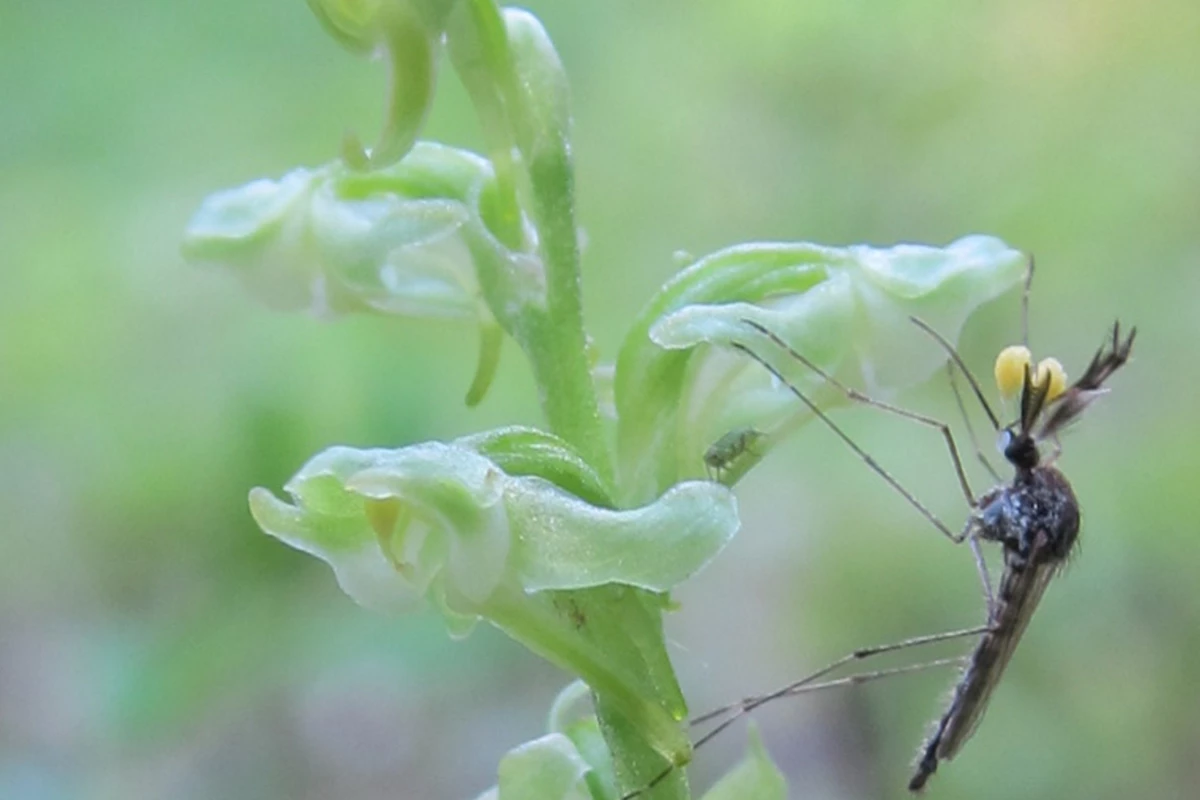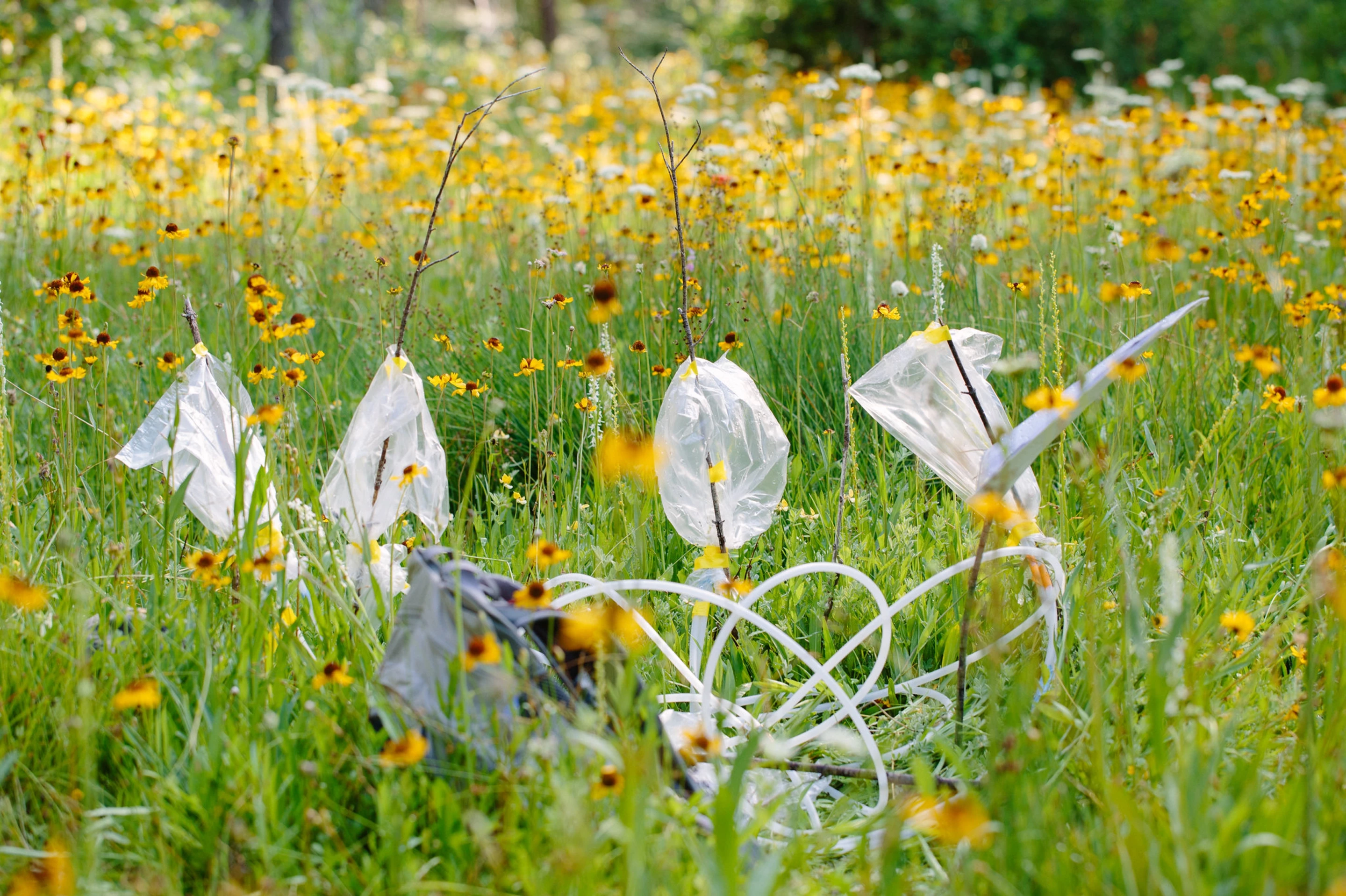Mosquitoes are infamous for their apparent predilection for blood: notably, from a human perspective, human blood. In many parts of the world this brings with it the unwelcome possibility of the transmission of disease.
Trivia buffs may also know that it’s only female mosquitoes that feed on blood. Perhaps less well known, though well-understood in the science community, is that females only consume blood for a few days of their lives. The rest of the time they feed on flower nectar, which also happens to be the sole source of food for male mosquitoes.
New research shows just how potent the allure of flowers can be to mosquitoes, as well as, interestingly, a deterrent. The findings hint at the possibility that more effective, less toxic mosquito traps and repellents could one day be made, based on chemicals in flowers to which mosquitoes are attracted or averse.
The team looked more deeply into mosquitoes from the genus Aedes, and their attraction to Platanthera obtusata, commonly called the blunt-leaf orchid. The mosquitoes’ preference for the orchid had already been observed, but by covering the orchids with canvas bags, the researchers demonstrated that it was the orchid’s scent that proved irresistible. This prompted the researchers to set about recreating the scent in the lab, which is where things get interesting.

“We often describe scent as if it’s one thing – like the scent of a flower, or the scent of a person,” supervising author Jeffrey Riffell says in a University of Washington press release. “Scent is actually a complex combination of chemicals – the scent of a rose consists of more than 300 – and mosquitoes can detect the individual types of chemicals that make up a scent.”
The team used gas chromatography and mass spectroscopy to identify the chemicals present, finding two in particular which stood out as different from similar orchids to which the mosquitoes in question aren’t attracted. The compound nonanal, or nonanaldehyde, was more prevalent; while the compound lilac aldehyde was less prevalent.
By measuring electrical activity in mosquito antennae, the researchers could see that several species of mosquitoes respond to these compounds, and not only those native to the high-altitude climates in the Northern Hemisphere where blunt-leaf orchids occur. This was despite those species having diverged over 100 million years ago. The scent proved attractive to both females and males.
The mosquitoes preferred the compounds to appear in the same ration present in the orchid. Interestingly, with no lilac aldehyde, they became less keen. However, with more lilac aldehyde than occurs naturally, the mosquitoes were sometimes repelled by the scent.
This makes sense, since there’s more lilac aldehyde in other Platanthera orchid species to which mosquitoes aren’t attracted.
Examining the brain activity of Aedes increpitus and genetically-modified Aedes aegypti mosquitoes, the researchers could see that nonanal and lilac aldehyde stimulate competing parts of the brain, with activity in the one capable of suppressing activity in the other. It seems to be the precise ratio of these compounds, and hence the nature of this chatter across the brain, that makes one orchid compelling and another repellent.
This raises the compelling prospect of improved human-made repellents and traps based on the chemical makeup of orchid scents. But it’s too early to say that for sure. “Lilac aldehyde could be a potential repellent,” Riffell tells New Atlas, “but this needs to be verified in future experiments, both in the laboratory and the field.”
The team is going on to research other sources of sugar attractive to mosquitoes that may one day prove useful in developing traps that could fight the spread of disease.
The research team comprises members of the University of Washington, Virginia Tech, and UC San Diego. Its lead author is Chloé Lahondère. The research was recently published in the Proceedings of the National Academy of Sciences and is free to read online.
Sources: University of Washington, Proceedings of the National Academy of Sciences





